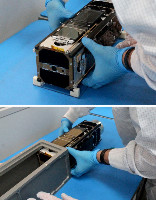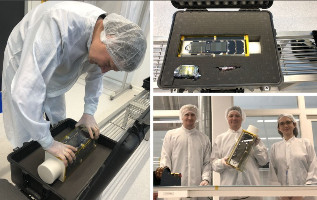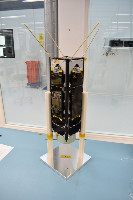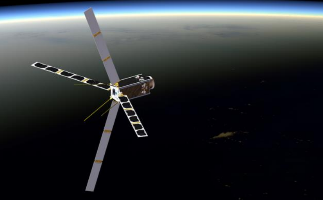| Name | SOAR (Satellite for Orbital Aerodynamics Research, DISCOVERER) |
|---|---|
| Form factor | CubeSat |
| Units or mass | 3U |
| Mass in kg | 3.355 kg |
| Status | Reentry 2022-03-14. Was operational (Official confirmation on 2021-07-14 last checked on 2021-08-04) |
| Launched | 2021-06-03 |
| NORAD ID | 48851 |
| Deployer | NRCSD (NanoRacks CubeSat Deployer) [Quad-M] |
| Launcher | Falcon 9 (CRS-22) |
| Deployment | Deployed from ISS on 2021-06-15 |
| Entity name | University of Manchester |
| Institution | University |
| Entity | Academic / Education |
| Nation (HQ) | UK |
| Nation (AIT) | Denmark |
| Manufacturer | AIVT by GomSpace |
| Operator | The University of Manchester |
| Partners | University of Manchester, Elecnor Deimos, GomSpace, University of Stuttgart, UPC-BarcelonaTECH, University College London, Euroconsult |
| Costs | €5.7 million |
| Oneliner |
Demonstrate aerodynamic attitude and orbit control manoeuvres. |
| Description |
The primary aim of the SOAR mission is to test and characterise new materials that can reduce the experienced drag and increase aerodynamic performance in low altitude orbits. The satellite will also perform characterisation of the atmospheric flow and demonstrate novel aerodynamic attitude control manoeuvres. Investigate the interaction between different materials and the atmospheric flow regime in very Low Earth Orbit and to demonstrate aerodynamic attitude and orbit control manoeuvres. Identification of materials which can minimise drag or improve aerodynamic control. Two payloads:
|
| Sources | [1] [2] [3] |
| Photo sources | [1] [2] [3] [4] [5] |
| COTS subsystems |
|
| Subsystems sources | [1] [2] |
| On the same launch |
Last modified: 2023-06-09




